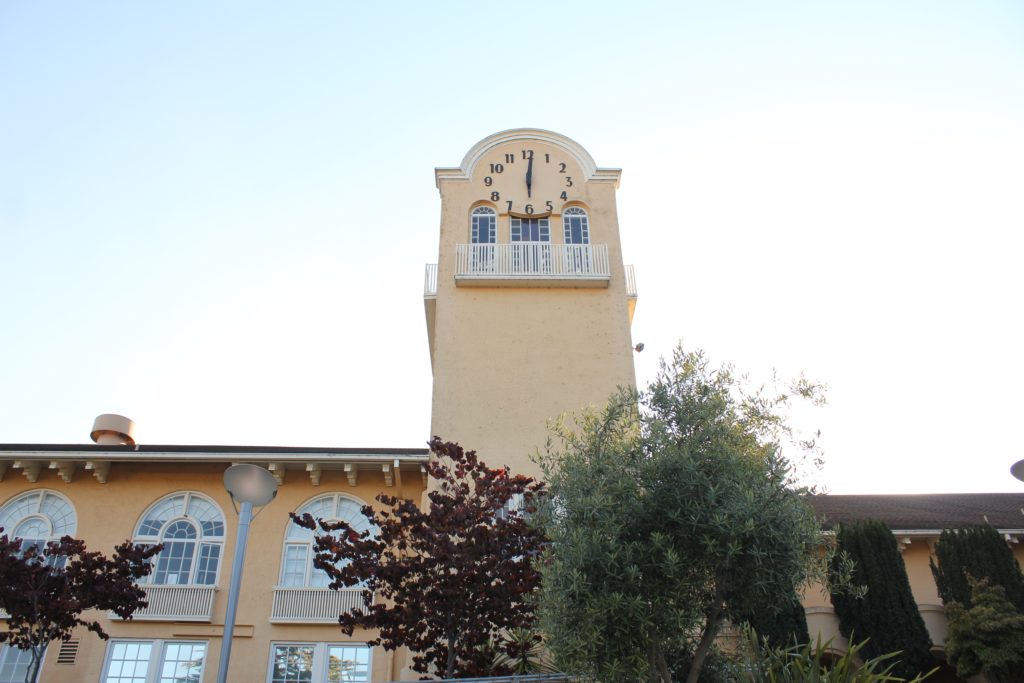Leadership transitions to block period class in an effort to increase diversity
Sep 19, 2020
ASB was unable to provide The Tam News with data regarding student demographics in leadership.
In line with ongoing efforts to increase diversity and accessibility to the program, per a decision made by the advisors and administration, the Leadership class period moved from zero to fifth period this year. However, the level of racial diversity in the class has dropped in comparison to recent years.
“This is the first time that the change of a placement of a class has been made to improve diversity,” principal J.C. Farr said. “We thought that moving it to during the day would increase the access and openness to students who would be interested in taking the Leadership class.”
The idea came into consideration two years ago, as complications with the zero period became more apparent.
“We thought that zero period was a barrier because it’s so early in the morning, especially for students from communities outside of Mill Valley,” ASB advisor Nathan Bernstein said.
Class of ‘20 graduate Grace Rodriguez, who was in Leadership for all of high school, experienced this barrier first hand.
“It was kind of difficult getting to school by 7 a.m. four days a week, especially since I lived in Bolinas which is roughly 45 minutes away,” Rodriguez wrote in an email.
Similarly, senior and former staff member of The Tam News Stephania Glass woke up at 5:45 a.m. on every Monday, Tuesday, and Wednesday to catch the 6:30 a.m. bus from Marin City, although “class didn’t even start until 7:10.”
“The access to Leadership as a zero period was limited to people who lived in the immediate area of the school or people like me with incredibly supportive family members. Students living in [Bolinas and Stinson], Marin City, and even Sausalito had very limited access to Leadership,” Rodriguez wrote.
Historically, like many Tam programs, Leadership has struggled with an underrepresentation of Tam’s minority groups in the program.
“Leadership has been seen as a white-dominated [program]. We are a diverse school so it’s important that we honor and value diversity and represent it,” Farr explained. “We want to create a program that is thoughtful of all of our students [and in which] different voices are represented because we have these different voices and perspectives.”
The intention behind making the period change was to develop the diversity of the program. However, several students, including Glass, ended up dropping the class because of elective priorities or scheduling concerns.
“[I] didn’t want a [full seven-period] load my senior year of classes and didn’t think we needed an actual class period to do the work we already did in just 50 minutes,” Glass said.
Junior Sonam Tamang also found himself in this position.
“Every class I signed up for was a graduation requirement or something I was interested in and Leadership did not take priority. Zero period [was] what made it accessible for me,” he said.
“When you put a class at a certain period it creates a conflict,” Farr said. “I’m sure that choices had to be made in terms of scheduling. When a class is a zero period you don’t have to compromise your other interests.”
Senior and Sausalito resident Jamilah Karah, who has taken the Leadership class since the fall of her freshman year, explained that “with the pandemic going on, it has been tougher to get more people into Leadership.”
This was due to the fact that most of last semester was entirely online. According to Bernstein, Leadership was unable to recruit and host interviews with incoming students, which led to a significant lack of freshmen enrolled in the class. ASB was unable to provide the Tam News with data representing student demographics in Leadership.
“What I thought was good about Leadership was that all the grades could participate and give feedback to Leadership,” Tamang said. “Now it’s just upperclassmen since freshmen and sophomores only have two [electives] that they can choose since the others are graduation requirements.”
This is partly why, according to Bernstein, the diversity in enrollment has dropped.
“The numbers show that overall it became less diverse, so on that fact, it didn’t work right away,” he said.
The idea of transitioning the class to a block period was introduced incrementally to students, which gave them time to discuss and adjust to the possibility.
“They’ve talked about changing to a regular class period since my sophomore year. There was a lot of backlash from upperclassmen because of scheduling conflicts, especially with AIM,” Rodriguez wrote. AIM occurs only during periods five, six, and seven, so it conflicts with the new fifth period Leadership class. This meant many students enrolled in both had to decide between the two.
“Scheduling was tough as is, but now it just made it more difficult,” Karah said.
According to Bernstein, the overall popularity of the decision before it was finalized “was 50/50. There were a lot of kids who wanted to take all of their classes so it did push kids into making a choice, which isn’t a bad thing.”
Moving forward, Leadership faculty and students plan to examine further opportunities for expanding diversity within the program.
“That’s what Leadership does. It’s about making sure that we have an environment where all students feel welcome,” Farr said. “We shall see how it all unfolds.”




